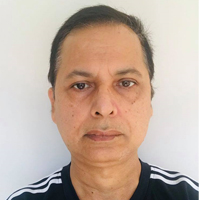Dieulafoy’s Lesion related massive Intraoperative Gastrointestinal Bleeding during single Anastomosis Gastric Bypass necessitating total Gastrectomy: A Case Report
Published on: 15th September, 2017
OCLC Number/Unique Identifier: 7317595611
Introduction: Immediate postoperative gastrointestinal bleeding following bariatric bypass surgery is a major complication, and usually results from staple line hemorrhage or conventional gastro-esophageal causes. Dieulafoy`s lesion is a rare cause of gastrointestinal bleeding and is usually managed by endoscopic means. Herein we present a case of massive intraoperative bleeding resulting from gastric Dieulafoy`s lesion single anastomosis gastric bypass surgery necessitating resection of the gastric pouch. This is the first description of this complication, and the difference of such a lesion from the sporadic ones is discussed.
Discussion: Gastric bypass surgery is an effective procedure for morbid obesity. The approach we have adopted for massive upper GI hemorrhage in the immediate postoperative period should be distinguished from delayed bleeding after gastric bypass. In these latter cases, marginal ulceration is more common than bleeding from the remnant gastric pouch. It is also likely that bleeding from a Dieulafoy`s lesion following gastric bypass surgery represents a different disease compared to other Dieulafoy`s cases.
Conclusion: This is the first description of an intraoperative Dieulafoy`s lesion bleeding during the conduct of a single anastomosis gastric bypass procedure which required gastric pouch resection. Such a lesion differs from sporadic Dieulafoy`s cases, and must be considered in every case of intraoperative bleeding during gastric bypass.
The Essential Role of Esophagogastroduodenoscopy Prior to bariatric surgery
Published on: 20th June, 2018
OCLC Number/Unique Identifier: 7814987530
We read with interest the case report entitled “Dieulafoy’s Lesion related massive Intraoperative Gastrointestinal Bleeding during Single Anastomosis Gastric Bypass necessitating total Gastrectomy: A Case Report” published in Archives of Surgery and Clinical Research b Ashraf Imam et al. [1]. We appreciate the authors for managing such a complicated case and for sharing their experience but, we have some conflict about the management, and we wanted to add some comments regarding the importance of EGD before bariatric surgery.
In the published case, no preoperative EGD was done and the authors mentioned that Dieulafoy’s Lesion is very unlikely to be diagnosed in the routine endoscopy. We agree with that statement but, it is not a good reason to eliminate this diagnostic modality before surgery. Though controversial, there is growing evidence which supports the importance of routine EGD prior to obesity surgery [2]. This may alter the surgical or medical plan for the obese patient, Furthermore, we have a different opinion about this patient’s management and, we wanted to share this with the authors.
In the reported patient, after control of the bleeding during gastrojejunal anastomosis, the OAGB(One Anastomosis Gastric Bypass) concluded successfully but, the patient was re-intubated because of severe bloody emesis at the recovery room and then an arterial bleeding point in the posterior wall of the lesser curvature close to the esophagogastric junction was found. This does not illustrate the reason for the huge gastric remnant seen at the laparoscopy because it was at least 200 cm far from the pouch and backwards flow of blood is very unlikely. Our opinion is, due to 90% diagnostic rate and about 75-100% success in hemostasis, on-table EGD should have a more highlighted role in treatment of the reported case [3].
Even if the pouch was dilated, it was not rational to perform a total gastrectomy in such an unstable patient and a laparoscopic pouch resection followed by Roux- en-y esophagojejunostomy could be a better choice in our point of view. Moreover, Feeding gastrostomy could be a better option rather than feeding jejunostomy, if needed.
In summary the essential role of endoscoy for screening the patients before bariatric surgery and, for the management of complications (though controversial), should always be kept in mind by bariatric surgeons.




